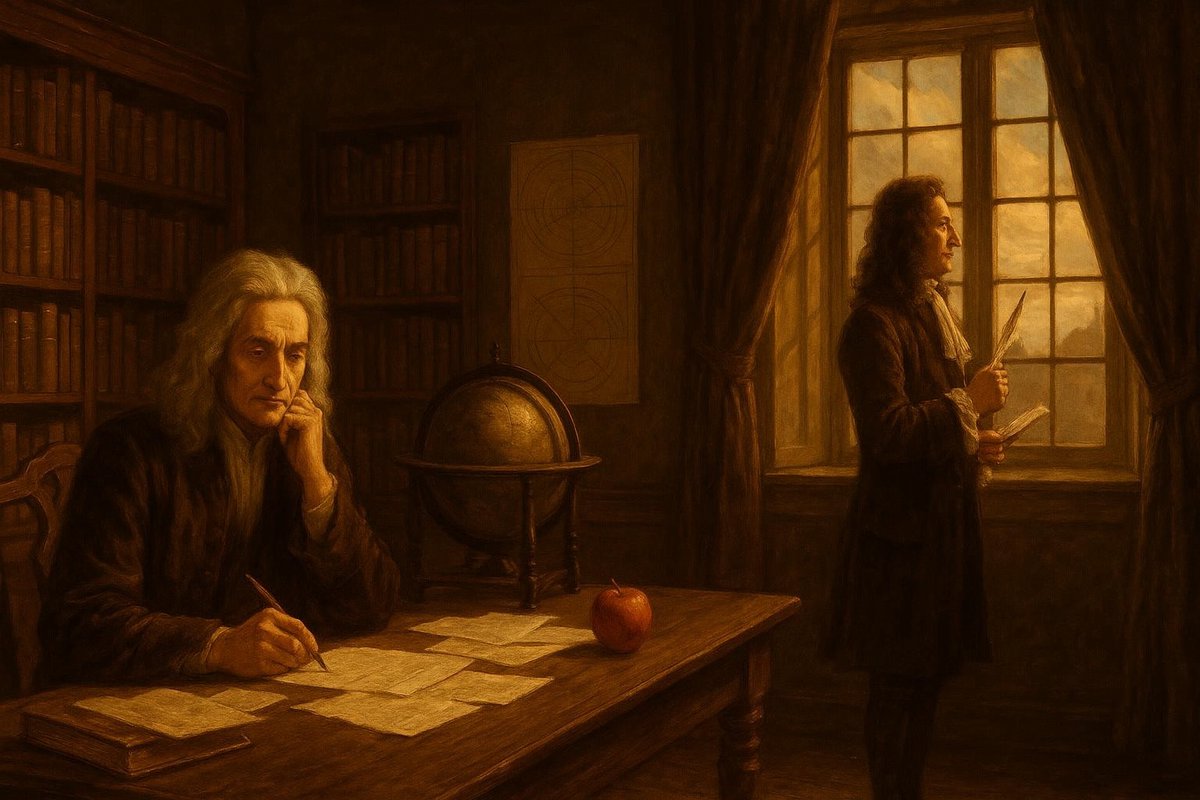
Problem Context: An Age of Questions
Have you ever watched an apple fall and wondered why it accelerates as it nears the ground? The 17th century was bursting with such questions. People sought to understand motion, space, and time, yet existing mathematical tools fell short. Geometry and algebra struggled to explain the curves and changes in nature, and this gap left many scholars perplexed.
• In an era where understanding the heavens was akin to decoding divine will, the motion of planets was a tantalizing enigma.
• The need for a mathematical framework to describe motion was pressing, especially as new discoveries in astronomy and physics emerged.
• Galileo’s observations highlighted the acceleration of falling objects, but no method could quantify it precisely. Enter calculus.
The stage was set for a revolution, with science hungry for a new language to describe the world. It was a time of exploration, both of the physical universe and of human understanding.
Theoretical Breakthrough: A Duel of Giants
Enter Isaac Newton and Gottfried Wilhelm Leibniz, two towering figures whose names would become synonymous with calculus. Newton, in the solitude of the English countryside, and Leibniz, amidst the intellectual salons of Europe, independently developed the fundamental principles of calculus.
• Newton referred to his approach as “the method of fluxions,” focusing on change and motion, arising during the plague years of 1665-1666.
• Leibniz’s notation, developed a decade later, was elegant and more user-friendly, involving differentials and integrals that are still taught today.
• Their rivalry was as much about national pride as intellectual recognition, leading to a bitter dispute over who invented calculus first.
This was not just a contest of ideas but a dramatic narrative of personal passion and ambition, each man driven by a desire to unearth the secrets of the cosmos.
Supporting Evidence: Proof in Practice
Calculus didn’t just remain in the realm of abstract thought; it quickly proved its worth across various scientific fields. From physics to engineering, it provided the keys to unlock numerous phenomena.
• Newton’s laws of motion paired perfectly with calculus, explaining everything from the trajectory of a cannonball to the orbits of planets.
• Leibniz’s notation facilitated advancements in biological sciences, allowing for more precise modeling of growth rates and biological processes.
• By 1687, Newton’s “Principia Mathematica” cemented calculus as indispensable to the scientific method.
The evidence was clear: calculus transformed scientific inquiry, offering a robust toolset to explore the unknown intricacies of nature.
Modern Relevance: The Everlasting Impact
Today, the legacy of calculus is undeniable. It underpins technologies and sciences that shape our daily lives, from computer algorithms to medical imaging.
• Without calculus, the development of complex systems like internet networks or space exploration would be inconceivable.
• In economics, calculus models fluctuations and predicts trends, guiding global financial systems.
• The educational path of any budding scientist or engineer inevitably includes mastering this powerful mathematical language.
The rise of calculus was not just a scientific milestone; it was a testament to human curiosity and the relentless pursuit of understanding.
Fuel Someone Else’s Curiosity
Reflect on the impact of calculus and share this tale of discovery. Inspire others to appreciate the power of human intellect and passion in shaping our world.

Leave a Reply